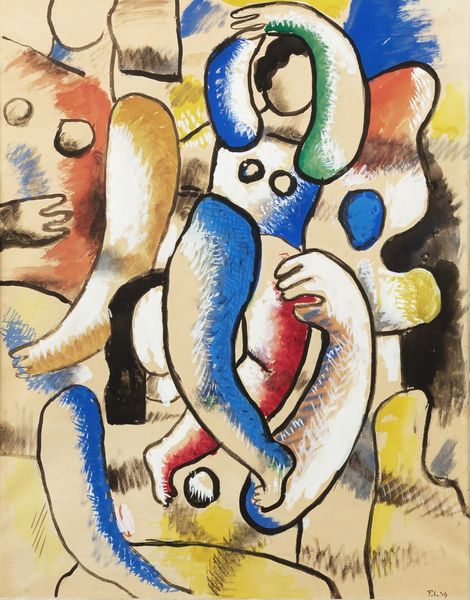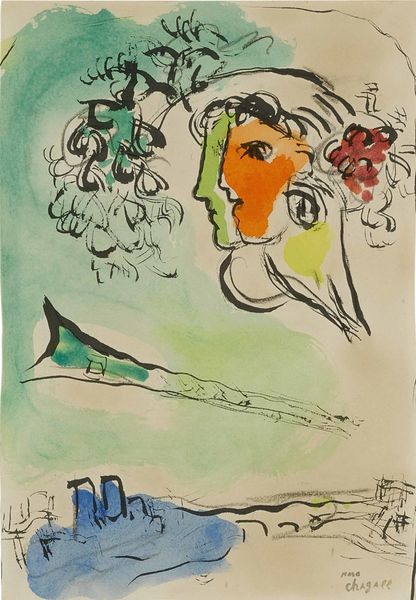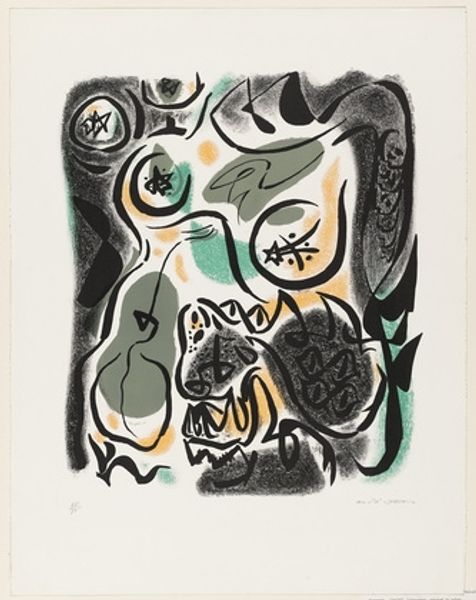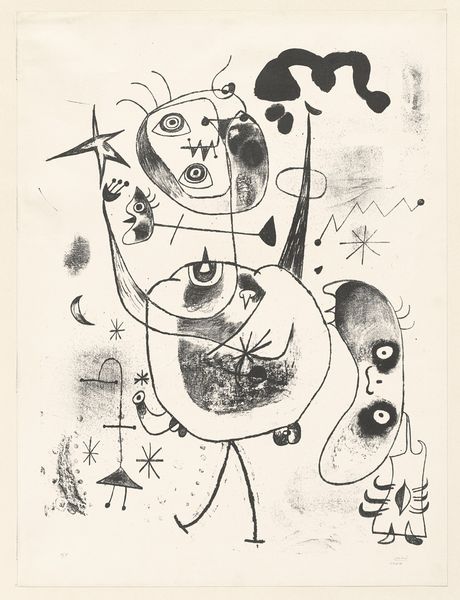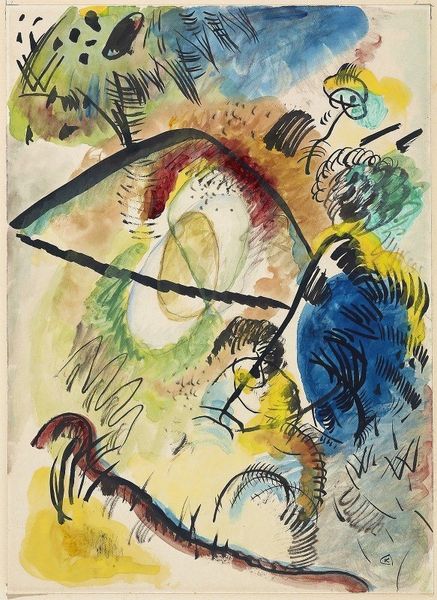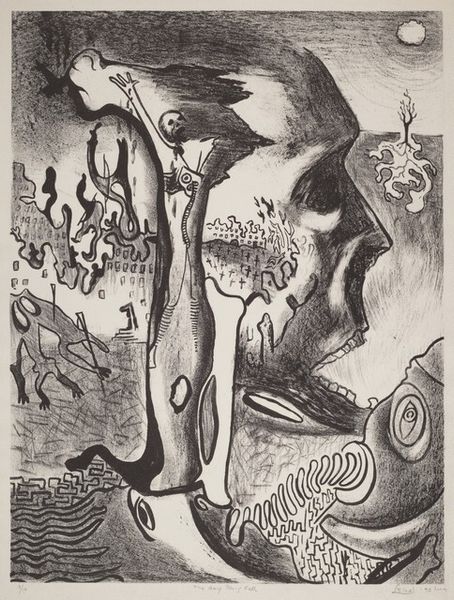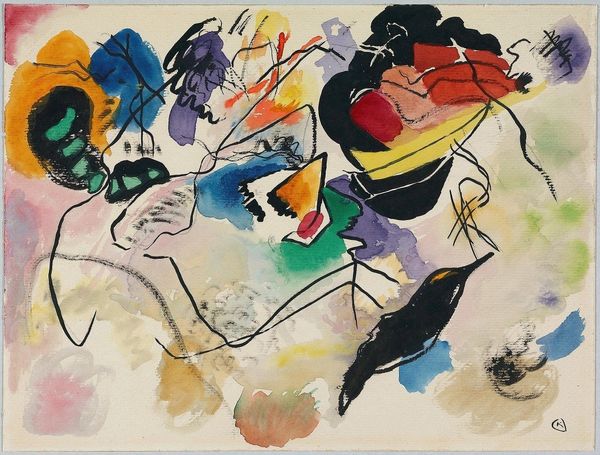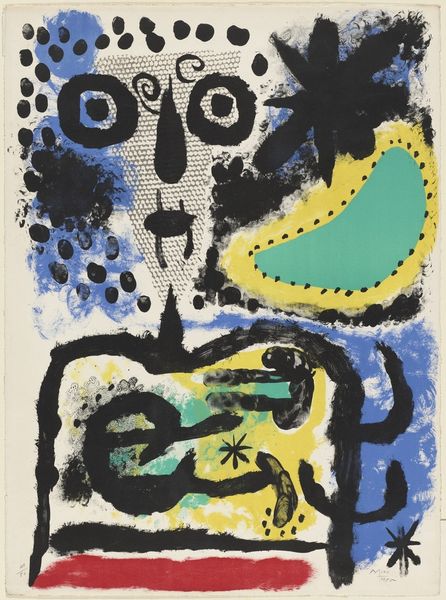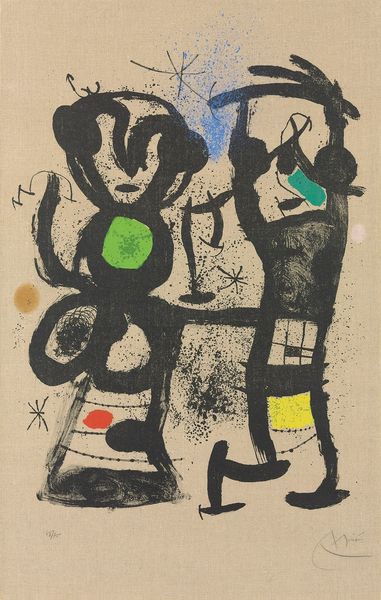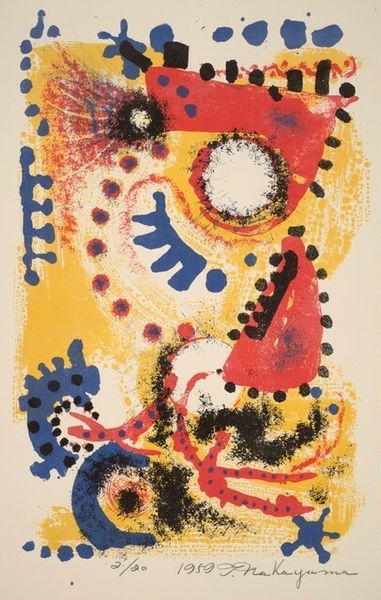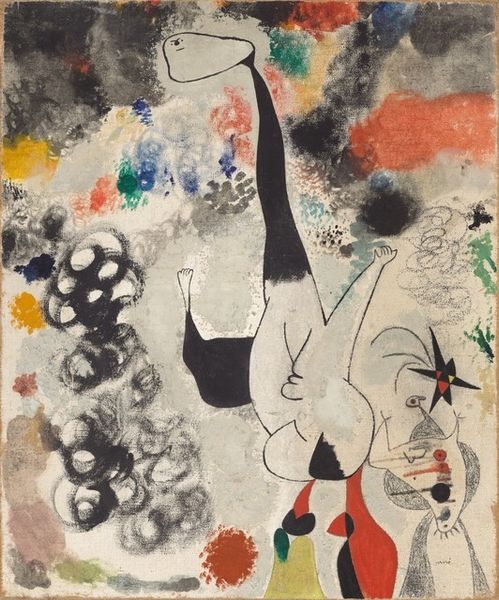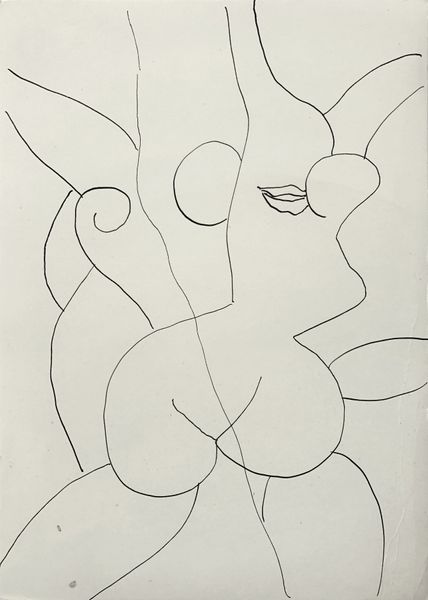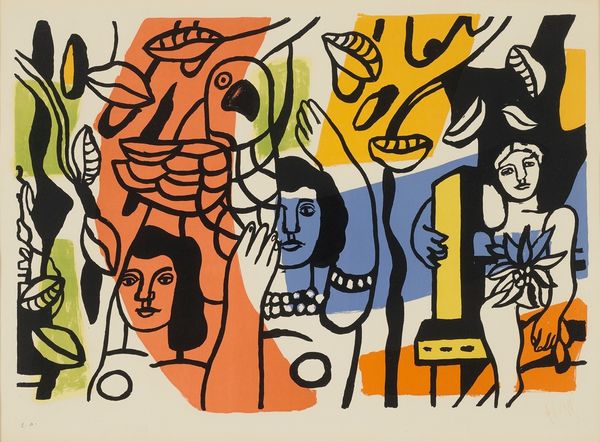
Copyright: Modern Artists: Artvee
Curator: Looking at Marc Chagall’s "The Three Acrobats" from 1956, painted with oils, I am immediately drawn to the vibrancy within its whimsical distortions. The composition appears both balanced and chaotic, which produces an unsettling effect for me. Editor: Yes, that is quintessential Chagall! This piece really exemplifies his use of circus and performers as metaphors, a recurring motif reflecting themes of alienation and survival. Acrobats, after all, embody risk and resilience. Curator: Absolutely, and the specific imagery Chagall deploys certainly echoes cultural memory surrounding traveling performers and perhaps also alludes to the vulnerability inherent in being "othered," to use contemporary phrasing. Note the symbolic charge of the bouquet one figure offers; in what way does it extend care or suggest complicity? Editor: Right, and if we situate it in the broader context of Chagall’s personal history—fleeing persecution, grappling with identity—it highlights those intersectional themes. Considering that his work often returned to folklore and memory, these figures may serve as symbolic stand-ins for the diaspora, embodying fragmented identities negotiating societal pressures. Curator: It almost reads like a Kabbalistic diagram, which itself could be viewed as a tool for social commentary; each figure positioned within an almost cosmic field. Perhaps Chagall employed this compositional structure to propose modes for grappling with political injustice through reimagining inherited tradition. Editor: Yes, there’s a deliberate naivete in his stylization—an echo, perhaps, of folk art—yet the work resists simple interpretations. His palette choices amplify those complexities. For instance, notice the washes of colors against raw patches of skin on some bodies; this speaks to a nuanced narrative involving bodies which have suffered or been damaged, if not stigmatized by various oppressive power systems. Curator: His signature dreamlike state, therefore, provides cover to represent serious ideas? I can view those bold black outlines framing the forms, for instance, less as mere decoration and more like bars on a cage? Editor: Precisely, these acrobats are, paradoxically, simultaneously free and contained. Hopefully our listeners today recognize and question similar binds still operating in our own contemporary context. Curator: I, for one, am walking away newly sensitized to Chagall’s awareness of cultural legacies. Editor: And hopefully that sensitization also applies to social equity. Chagall compels us to ask, how are the dynamics in that circus of life really distributed?
Comments
No comments
Be the first to comment and join the conversation on the ultimate creative platform.
